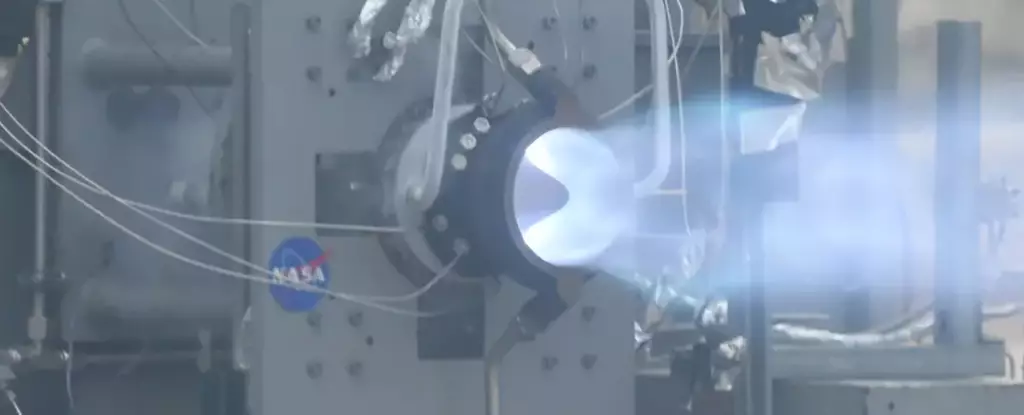After successfully landing on the Moon, the next frontier for humanity is Mars. However, this ambitious endeavor presents a whole new set of challenges in the realm of space travel. In an exciting development, NASA recently announced a major breakthrough in rocket engine technology that could propel us to the Red Planet at unprecedented speed. The prototype Rotating Detonation Rocket Engine (RDRE) has achieved remarkable results, achieving 25,810 newtons of thrust for 251 seconds. This surpasses the previous record set in 2022 and paves the way for the construction of a fully reusable RDRE with even greater capabilities.
At the forefront of this revolution in space propulsion is the RDRE. Unlike traditional liquid rocket engines, the RDRE utilizes a sustained detonation that encircles a ring-shaped channel. This detonation is fueled by a mixture of fuel and oxygen, ignited by each passing explosion. While the technology has been in development for several years, it is now showing promising stability and reliability, making it suitable for actual rocket applications.
The most significant advantage of the RDRE is its improved design efficiency. By utilizing less propellant fuel than conventional engines, it has the potential to significantly reduce the cost of space exploration. Additionally, its simpler machinery and mechanisms offer a more cost-effective solution for long-distance journeys. With this revolutionary engine, traveling further distances within our solar system becomes not only economically viable but also within reach.
NASA’s utilization of 3D printing techniques for producing machine parts further enhances the RDRE’s capabilities. These custom-made components are designed to withstand the extreme heat and pressure inherent in the RDRE’s operation. As a result, engineers now have a better understanding of how to scale and adapt the combustor to support different thrust levels, engine systems, and mission classes. This versatility signifies an essential step towards achieving NASA’s ambitious vision of human exploration on Mars by the 2030s.
While this breakthrough in rocket engine technology is undoubtedly a monumental achievement, there are still numerous obstacles to overcome before Mars becomes a habitable destination. However, having an efficient means of propulsion is a significant stride in the right direction. By making lightweight propulsion systems more accessible, NASA can transport greater masses of supplies and payloads into deeper space. This capability is crucial for advancing the agency’s Moon to Mars initiative and opening up new frontiers for exploration.
The successful test of the RDRE marks a milestone in the history of space exploration. This revolutionary rocket engine surpasses previous records, propelling us closer to the ultimate goal of reaching Mars. Its improved efficiency, reduced fuel requirements, and adaptability make it an ideal propulsion system for long-distance space travel. While challenges lie ahead on our journey to Mars, the RDRE represents a vital piece of the puzzle in achieving our extraterrestrial ambitions. With this pioneering technology, the future of space exploration looks brighter than ever before.



Leave a Reply